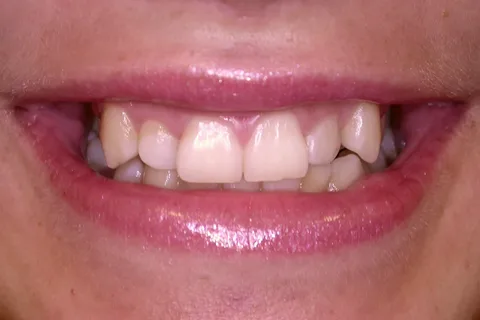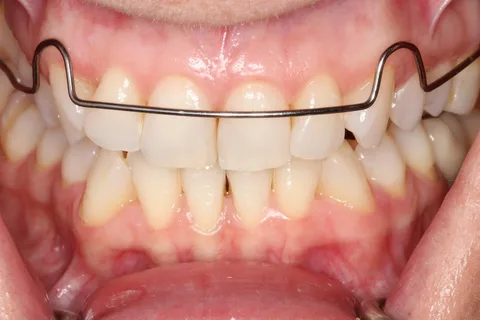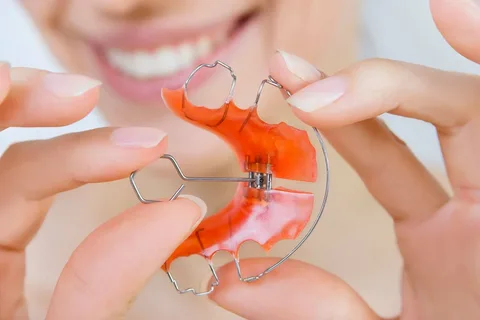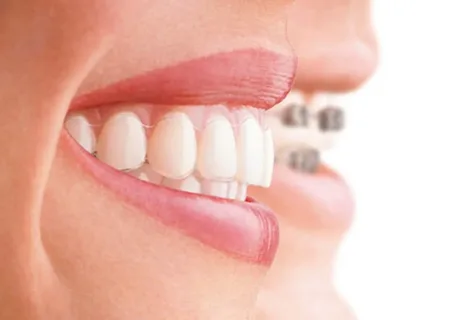Anomalies in the number and position of teeth
Machine translation
Original article is written in RU language (link to read it).
Anomalies in the number of teeth may include the following:
hypodontia or adentia,
hyperdontia, supernumerary teeth.
Protocols for the treatment of cramped teeth can be found in the webinar Clamped teeth: treatment of complex clinical cases .
Hypodontia
Hypodontia is a congenital pathology characterized by the absence of some teeth. Congenital hypodontia can be partial, when no more than 10 teeth are missing, and also multiple and complete.
Etiological factors of congenital adentia
Violation of the formation of dental follicles.
Damage to the primordia during embryonic development.
General somatic pathology of the mother during pregnancy, previous infectious diseases, hypovitaminosis, pathologies of metabolic processes.
Loss of rudiments due to injury, inflammatory processes at the tops of temporary teeth, osteomyelitis, premature removal of erupted teeth.

Figure 1. Teeth misalignment.
Clinical manifestations
The position of individual teeth is disturbed.
Functional overload of some teeth appears.
There is a delay in the development of alveolar bone.
There is deformation of the dental arches.
A decrease in bite height is determined.
Grinding food is ineffective.
The patient complains about aesthetics.
The following teeth are predominantly susceptible to congenital adentia:
lateral incisors,
second premolars,
wisdom teeth.
The study of diagnostic models reveals that the width of the crowns of permanent teeth is reduced relative to the average tabular data. Adentia is often accompanied by bone dystrophy throughout the body, mainly the skull and shoulder girdle.
Principles of treatment
Treatment is aimed at ensuring the normalization of chewing function, preventing subsequent deformations, and restoring aesthetics. Most patients suffering from hypodontia require oral prosthetics. Orthodontic treatment is only a preparatory stage for the subsequent production of orthopedic structures.
The cause of hyperdentia has not yet been established. Supernumerary teeth are located mainly in the frontal region, rarely in the lateral region. Most often in permanent dentition. The shape of the crowns of supernumerary teeth is abnormal.

Figure 2. Supernumerary teeth.
Clinically, supernumerary teeth are identified during an examination of the oral cavity, as well as during an X-ray examination of the jaws.
If supernumerary teeth, if preserved in the dental arch, do not provoke a violation of occlusion and aesthetics, their removal is not necessary, but most often they must be removed.
Anomalies of teeth position
Determination of abnormal teething is carried out in three planes:
Sagittal plane: mesial or distal displacement of chewing teeth, vestibular or oral frontal, transposition.
Vertical plane: supraposition or infraposition; rotation of the tooth relative to the longitudinal axis.
Horizontal plane: medial and lateral displacement of anterior teeth; vestibular and oral lateral.
Vestibular displacement of chewing teeth
With this anomaly, teeth erupt outward from the dentition. The vestibular location can be occupied by individual teeth or a group of teeth at once.
Etiological factors
lack of space,
supernumerary teeth,
pathology of follicle formation,
mouth breathing,
macrodentia,
bad habits,
swallowing pathology,
jaw sizes are not proportional.
Principles of treatment
Oral movement of teeth is possible provided there is space in the dental arch. An orthodontic design is used, equipped with occlusal pads and incorporating a screw, the latter is gradually tightened, displacing the chewing teeth orally. If normalization of the location of an individual tooth is required, a design with a vestibular arch is required.

Figure 3. Teeth misalignment.
Protrusion – vestibular arrangement of anterior teeth
This abnormal position can be easily corrected if there are trema and diastemas.
Devices
plate with vestibular retraction arch;
vestibular plate, which is adjacent to the vestibular to the alveolar process and the crowns of the anterior teeth;
Bracket system;
Engle's sliding arc.
If the protrusion of the frontal teeth is combined with a narrowing of the dental arch in the area of the chewing teeth, it is necessary to expand the dental arch.
Orthodontic structures
A plate is used, equipped with a screw for expansion, devices for bite release, and a retraction arch.
If the protrusion is caused by a lack of space in the row, the supernumerary or less valuable teeth from the point of view of function and aesthetics (first premolars) are removed. Orthodontic treatment is combined with myogymnastics, the orbicularis oris muscle is strengthened, and bad habits are eliminated.
Oral position of teeth
A distinctive feature of this anomaly is the location of the teeth medially from the dental arch.
Possible reasons
pathology of follicle formation,
early extraction of baby teeth,
hyperdontia,
mesial location of chewing teeth,
bad habits,
mouth breathing,
pathology of speech and swallowing.
Retrusion is an oral arrangement of the front teeth; the dental arch is deformed in such a way that it takes on a trapezoidal shape.
Principles of treatment
To provide space for chewing teeth, it is necessary to move the teeth in front mesially, and the teeth behind them distally, often without removal.

Figure 4. Orthodontic treatment process.
Mesial location of posterior teeth
Etiology
caries damage to proximal surfaces,
premature removal of baby teeth or loss of permanent teeth,
bad habits,
mouth breathing,
anerubation and adentia.
The mesial displacement of the chewing teeth causes a shortening of the dental arch, a lack of space for the canines and premolars, their impaction or anerubation, and eruption outside the arch.
Principles of treatment
If the mesial displacement is no more than 4 mm, correction is carried out with orthodontic structures; if the displacement is more than 4 mm, teeth are first removed.
Medial position of incisors
Etiological prerequisites
macrodentia,
hyperdontia,
early tooth loss,
narrowing of the dentition.
Clinic
Crowding of teeth, rotation around an axis, location of teeth outside the dental arch.
Principles of treatment
The dental arch needs to be expanded.
Extraction of supernumerary teeth.
Lateral movement of incisors, distal movement of chewing teeth.
Lateral position of anterior teeth
This anomaly is characterized by the removal of the incisors from the midline, which is accompanied by the appearance of gaps - three and diastema.

Figure 5. Tremas and diastema.
Diastema correction is performed during mixed dentition before the permanent canines erupt. First, hyperdontia is eliminated, bad habits are eliminated, and proper swallowing is established. Next comes the stage of orthodontic treatment.
Distal position of posterior teeth
Causes
hyperdontia,
large primary molars,
distal anlage of primordia.
Principles of correction
Removal of supernumerary, individual lateral teeth, milk teeth in case of delay.
Mesial displacement is possible independently against the background of the elimination of the etiological factor.
If necessary, orthodontic treatment is started.
Infraposition and supraposition
Infraposition of the upper teeth is characterized by the location of the cutting edges or occlusal surfaces below the occlusal plane. Clinically detected when there are no teeth on the opposite jaw.
Infraposition of the lower teeth is their position below the plane of occlusion. The main reason is the lack of free space in the dental arch.
Maxillary supraposition is an anomaly in which the upper tooth is positioned above the occlusal plane. Reasons: lack of space in the dentition, bad habits, parafunctions of the tongue.
Supraposition of the lower teeth is the location of the teeth above the plane of occlusion.
Principles of treatment
To carry out vertical movement of teeth, orthodontic appliances are mainly used to provide traction for impacted and impacted teeth.
Intrusion uses structures that increase pressure in the vertical plane.
Torso position
An anomaly of position, which is a rotation of the tooth around its own longitudinal axis. This anomaly mainly affects incisors and canines.
Etiological background
macrodentia,
lack of space,
narrowing of the dental arches,
movement of teeth due to early loss of milk teeth,
pathology of follicle formation,
bad habits,
impacted teeth or hyperdontia.
Treatment
At the first stage, it is necessary to create a place for the rotated tooth, and then work on installing it in the desired position, using various designs of orthodontic appliances.
Transposition
This is a positional anomaly in which the teeth mutually change places.
The main reason is the pathology of the formation of dental follicles.
Most often, this anomaly is corrected during orthopedic treatment; the shape of the teeth is corrected using artificial crowns.
A step-by-step protocol for the treatment of complex cases of incisor protrusion at the webinar Treatment of severe dental protrusion using skeletal support .





